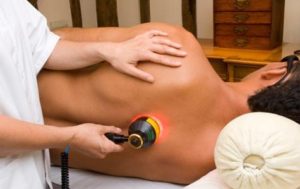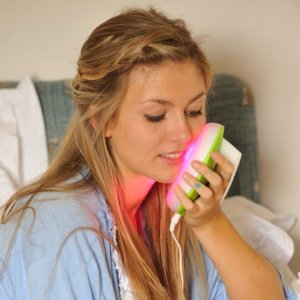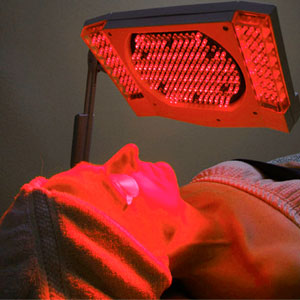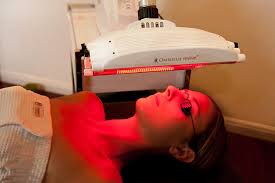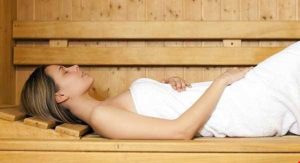 Here, I’m going to talk about the benefits of sauna treatments (often called sauna bathing) in general, although personally I have a strong preference for near infrared saunas because they take the benefits of sauna bathing and add the benefits of light-based therapy. The benefits of sauna bathing are many-fold.
Here, I’m going to talk about the benefits of sauna treatments (often called sauna bathing) in general, although personally I have a strong preference for near infrared saunas because they take the benefits of sauna bathing and add the benefits of light-based therapy. The benefits of sauna bathing are many-fold.
Biggest Benefit of Sauna Bathing: Sweating
Saunas can be up to 180 degrees, which quickly induces profuse sweating. But what are the benefits of sauna-induced sweating? For starters, sweating is one of the body’s methods for removing toxins. Many people don’t sweat much at all, so this kind of sweating can really make an impact. Of course, your body removes many toxins through the urine and feces. But considering the vast surface area of the skin, sweating in a sauna offers a boost in detoxification. Some toxins/waste products’ primary route of elimination is through the sweat.
Some of those toxins are heavy and toxic metals. In a University of Connecticut School of Medicine study published in Clinical Chemisty, researchers found that “sweating is a demonstrably significant route for excretion of trace metals, and sweating may play a role in trace-metal homeostasis.” The researchers concluded that sauna bathing could “provide a therapeutic method to increase elimination of toxic trace metals.”
Sweating in a sauna helps the body naturally remove toxic metals such as lead and cadmium. This has been documented in numerous studies, including this one, in which researchers found that sauna bathers excreted significant amounts of zinc, lead, copper and cadmium during sauna sweating. As an aside, they also found that among the women in their study, those taking oral contraceptives excreted more copper and lead than women who weren’t.
If you’d like to read more about the arsenic, cadmium, mercury and lead excreted during sweating/sauna bathing, check out this comprehensive review done by Canadian researchers. If you scroll down to Section 3.1, they give a listing of studies done on arsenic, cadmium, mercury and lead excretion.
Other research from the University of Connecticut School of Medicine has shown that when it comes to the body’s regulating of amino acids, sweating plays an important role in the excretory system. Upon analyzing sweat collected from sauna bathers, the evidence showed that some amino acids are eliminated almost entirely through sweat. The scientists of this study concluded that the “mechanisms controlling excretion of amino acids in sweat differ fundamentally from those regulating renal excretion of amino acids.”
A study from researchers in Warsaw compared the loss of certain nitrogen compounds in sauna bathers’ sweat to blood concentrations of the same compounds and published the results in the Polish Medical Weekly. They found that in the sweat they collected:
- Concentrations of ammonia were 77 times higher than blood levels. Interestingly, they also found that after 30 minutes in a sauna, plasma levels of ammonia increased 60%. Sauna bathing appears to trigger a detoxification reaction in the body.
- Levels of urea in the sweat were 3.5 times higher than plasma levels.
- Concentrations of creatinine were nearly twice as high as blood concentrations.
Sweating in a sauna has long been associated with beautiful, glowing skin. Sauna treatments make the skin softer and healthier looking.
Second Biggest Benefit of Sauna Bathing: Heat
No matter which type of sauna you choose, it’s going to be hot in there! The temperature itself is a benefit of sauna bathing.
The reason? Heat kills germs. The body’s natural response during an infection is to raise its temperature and cause a fever. The reason it does this is because many germs cannot survive the heat. They also tend to be inhibited the hotter their environment becomes. This gives the immune system a leg up.
For those with infections, this could be a huge benefit of sauna bathing. Personally, whenever I feel an infection coming on, the sauna is the where I head. For me, sinus and airway infections have been particularly helped by sauna heat. And of course, it also helps with the diseases that got me into saunas in the first place- Lyme disease and co-infections.
The heat is well known to relax muscles as well. When you are tired or have a back ache, a sauna bath can help ease tension and make you more comfortable. Sauna heat also helps make stiff joints more flexible.
Heat also causes vasodilation, an increase in blood vessel size. Circulation is greatly enhanced by the heat. Blood flow is generally good. (You know, if you’re alive and all.) In addition to bringing needed nutrients to all parts of the body, it encourages oxygenation and allows for toxins and waste products to be removed.
One thing the sauna heat is not good for is your hair. Wrap your hair up in a towel before using the sauna.
More Benefits of Sauna Bathing: Enhanced Immunity
A study from the University of Iowa College of Medicine found that sauna bathing caused the release of Interleukin-1 from the sweat glands. Interleukin-1 is a cell-signaling protein that is vital to the body’s response to infection. It appears that one benefit of sauna bathing could be that it triggers a type of immune system response.
Other research points to this conclusion as well. For instance, a study done by the Shiseido Company found that human sweat contains kininase II and kallikrein, two blood proteins involved in inflammation and pain responses (among other things).
Benefits of Sauna Bathing using Near Infrared Saunas
The benefits of sauna bathing I mention from here on out are specific to near infrared saunas. These are my favorite type of sauna, since they multi-task. You can do infrared light therapy and sauna treatment at the same time.
Near infrared saunas work a bit differently than furnace heated saunas. While they do make you sweat, the temperature of the air in the sauna will be lower than that of other types of saunas. That is because instead of heating the air in an effort to heat you, near infrared saunas use infrared light to heat you up directly. You can compare these two types of heating like this: furnace saunas heat you up the same way an oven would, while near infrared saunas heat you up the way the sun would on a hot day.
While you are sweating (it’s not as uncomfortable as it sounds- sauna heat is so dry) in a near infrared sauna, your body is taking in the infrared waves, which have the benefits of a sauna and more. Infrared light has been shown to temporarily relieve pain and to speed up the body’s own healing process…some experts say infrared light can speed up healing by 60-80%. In animals, infrared light can speed healing by up to 100%.
The benefits of sauna bathing using a near infrared sauna are becoming more well known and as a result, these types of saunas are becoming more popular. Many people are building their own sauna of this type.
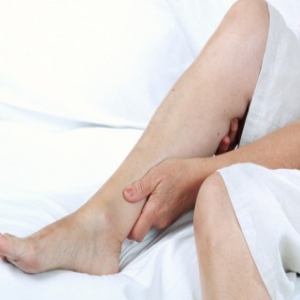 If you have Restless Legs Syndrome, or RLS, you already know that the treatment options available are frustratingly few. The most common doctor-prescribed treatments are medications that act on dopamine and ummm….movement. (Yeah. Gee, thanks, Doc!)
If you have Restless Legs Syndrome, or RLS, you already know that the treatment options available are frustratingly few. The most common doctor-prescribed treatments are medications that act on dopamine and ummm….movement. (Yeah. Gee, thanks, Doc!)